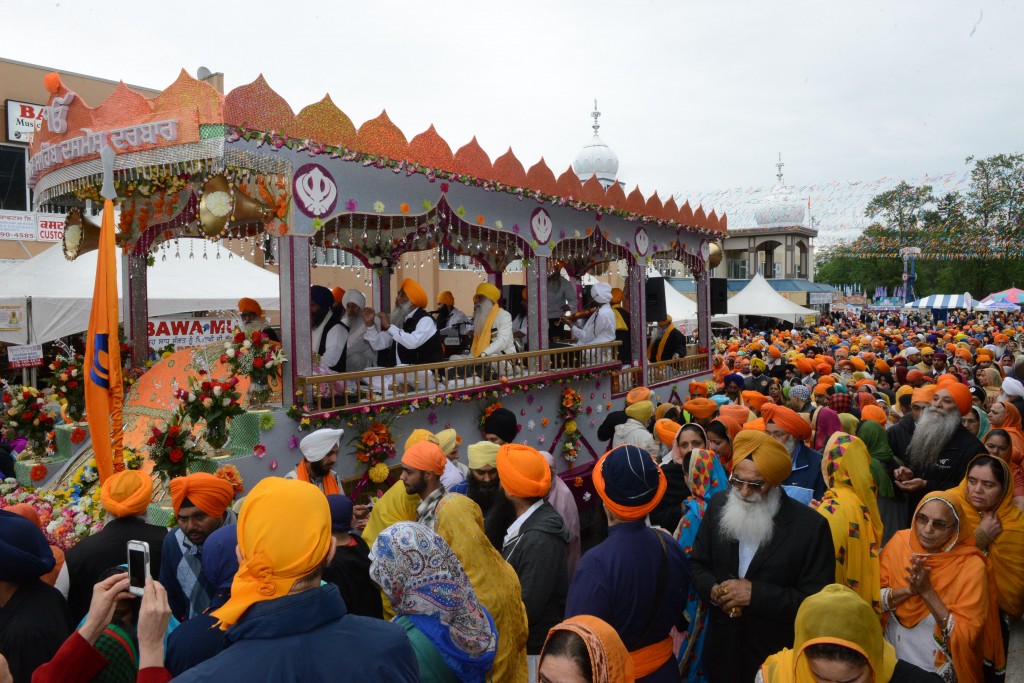DESIBUZZCanada
Events Listings
Dummy Post

International Day Of Yoga To Be Virtually Celebrated Saturday At 4pm

CANCELLED: Coronavirus Fears Kills Surrey’s Vaisakhi Day Parade

ADVERTISE WITH US: DESIBUZZCanada Is The Most Read South Asian Publication Online

SURREY LIBRARIES: Get Technology Help At Surrey Libraries

WALLY OPPAL: Surrey Police Transition Update On Feb. 26

GONE ARE THE DAYS - Feature Documentary Trailer

Technology Help At Surrey Libraries

Birding Walks

Plea Poetry/short Story : Youth Contest

International Folk Dancing Drop-in Sessions
Canada Number One Recipient Of Punjab’s Brain, Waste And Money Drain
- February 7, 2020

A large number of study visa aspirants belong to families with limited resources. To fund their education, their families either sell some land or other property or borrow money. Only 36% of families of the aspirants had adequate resources, while 17% students confessed that their families would sell property to arrange funds, 37% would depend on loan and 10% on relatives settled abroad.
By Dr. Sawraj Singh
A recent study by the Punjabi University, Patiala, reported by The Tribune, 4 February 2020, revealed that Canada is the number one destination for the immigrating Punjabi youth. The preferred destination for the immigrating youth: -
*Canada 78%
*Australia. 13%
*US 2%
*New Zealand 1.5%
*UK 0.5%
The study blames agrarian crisis and widespread unemployment as the main causes forcing the youngsters to take the “study route” to settle abroad. The study revealed that 79% of the students are from rural background and 70% are from farming families. A majority of these families fall in either marginal or small categories. The big farmers intend to further their economic position and maintain social status by sending their wards abroad for education. Wards of government employees make 16.5%, businessmen 8% and those working for private sector 6%.
A large number of study visa aspirants belong to families with limited resources. To fund their education, their families either sell some land or other property or borrow money. Only 36% of families of the aspirants had adequate resources, while 17% students confessed that their families would sell property to arrange funds, 37% would depend on loan and 10% on relatives settled abroad. Another interesting fact the study brought to the fore is that female study visa aspirants outnumber the male study visa aspirants and outnumber the male students in IELTS centers. Around 58% of the students in these centers are female, against 42% male.

The caste profile of the students revealed that over 90% of the study visa aspirants are from the general category. Just 2% were the scheduled castes and 8% were from Backward Classes.
The study authors wrote, “Such a pattern of distribution may be attributed to the requirement of large sum of money for going abroad, which many students belonging to scheduled castes cannot afford. Secondly, the provisions of reservation in admissions and jobs may be the fact.”
There are some points which do not become clear after reading about this study. Caste was used as one of the criteria. A General category is used along with the Dalit and Backward castes. However, this category includes many castes such as Jatts, Brahmins, Khatris and Banias. Trends in migration are very different in these castes. Migration is most prevalent in the Jatts and comparatively very less in the Banias. The study does point out that not only the marginal and ordinary farmers are sending their children abroad; even the rich farmers are also sending their children abroad. We can go to any village in Punjab and see that the Jatts belonging to all socio-economic strata are sending their children abroad and the trend of migration is the most prevalent among the Jatts.

Similarly, the term farming background does not tell us whether these young people or their families are engaged in farming. It is a common knowledge that many children of the farming background families are not doing farming. Most of the work in farming is now done by the migrant labor. More than 90% of Punjab’s land under agriculture is covered by two crops rotation, wheat and rice. Most of the income of the farmers comes from the rice crop. However, sowing of this crop is almost entirely done by the transitory migrant labor from UP and Bihar.
Another thing which does not become clear is why Canada is the number one destination for the Punjabi youth. There are pushing as well as pulling factors for immigration. While the study talks about the pushing factors such as unemployment and lack of opportunities, it does not tell us about the pulling factors. Canada is trying to attract immigrants. For example, it is much easier to immigrate to Canada than its neighbor, America. Also it is much easier to get permanent residency status in Canada than the other western countries.
The question is why Canada is promoting immigration. There are many reasons for that. Fertility rate is low among the white Canadians. Therefore, Canada needs about 1% of its population as immigrants every year to supplement its work force. Canada has made more money from immigration than any other western country. When the British handed back Hong Kong to China, many wealthy people from Hong Kong immigrated to Canada, particularly to the Vancouver area. They brought billions of dollars to Canada. Now, Punjabis immigrating to Canada are also bringing money to Canada in the form of immigration fees, tuition fees as well as by selling their lands and property in Punjab. Moreover, Canada is saving a lot of money which it would have spent upon raising the children in Canada. It is estimated that Canada spends about a million dollars in raising a child to the age of 18. For all these reasons, Canada has become number 1 recipient of Punjab’s brain and money drain.
Immigration is a very complex phenomenon which has economic, social, cultural and ethical aspects. When we try to understand with a linear, economic-only approach, usually we fail to understand it completely. Generally, there is a certain amount of pain associated with this phenomenon besides the pleasure. Great Edward Said wrote in 1984, the feeling of exile is “the unhealable rift forced between a human being and a native place, between the self and its true home.”

Dr. Sawraj Singh, MD F.I.C.S. is the Chairman of the Washington State Network for Human Rights and Chairman of the Central Washington Coalition for Social Justice. He can be reached at sawrajsingh@hotmail.com.
















